This is a schematic of belt and zone structure.
Click on image for full size
NASA
Altitude Variations of the Belts & Zones
On Uranus, as on Jupiter, the winds in the belts and zones blow first in one direction, then in the opposite direction. Wind blows east in a belt, and west in a zone. The clouds rise up in a belt, and drop down in a zone, as shown in this picture.
This would mean that a traveler flying in the sky would first encounter clouds, then the clouds would drop below, then the clouds would be encountered again. The traveler would experience extreme wind blasts from the west, then from the east. The tra
veler would experience severe winds pushing up in a belt, then severe winds pushing down in a zone.
You might also be interested in:
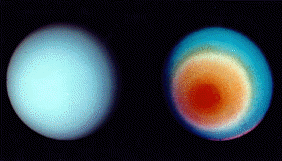
The striped cloud bands on Uranus, like Jupiter, are divided into belts and zones. On Uranus the belts and zones are hard to distinquish. The left picture shows the north pole of Uranus. In this picture
...more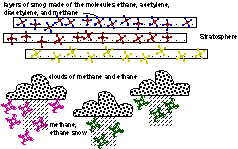
Besides methane, Uranus' atmosphere contains more sophisticated atmospheric molecules such as ethane gas, acetylene, and diacetylene. All these molecules form layers of haze at different altitudes high
...more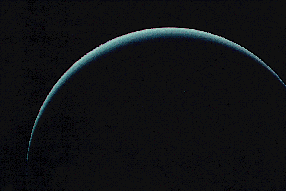
The mesosphere of Uranus is a region of balance between warming and cooling. That essentially means that nothing happens there. Except for diffusion, the atmosphere is still. Upper reaches of the atmosphere,
...more
As on Earth, the atmosphere of Uranus consists of a troposphere, stratosphere, mesosphere, and thermosphere. The troposphere is the region where the visible clouds are to be found. The stratosphere, as
...more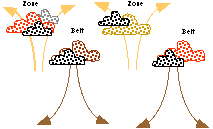
On Uranus, as on Jupiter, the winds in the belts and zones blow first in one direction, then in the opposite direction. Wind blows east in a belt, and west in a zone. The clouds rise up in a belt, and
...more
The clouds of Uranus, composed of methane crystals, are found very low in the troposphere, and are difficult to distinquish below the smog haz es of the planet's atmosphere. False color is used, in the
...more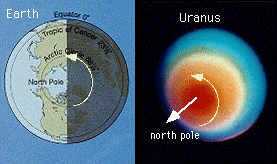
In this picture, the view of the north poles of the Earth and Uranus are shown together. In the view of the Earth, the sun is shining from the left, and part of the north pole is in daylight and part of
...more













